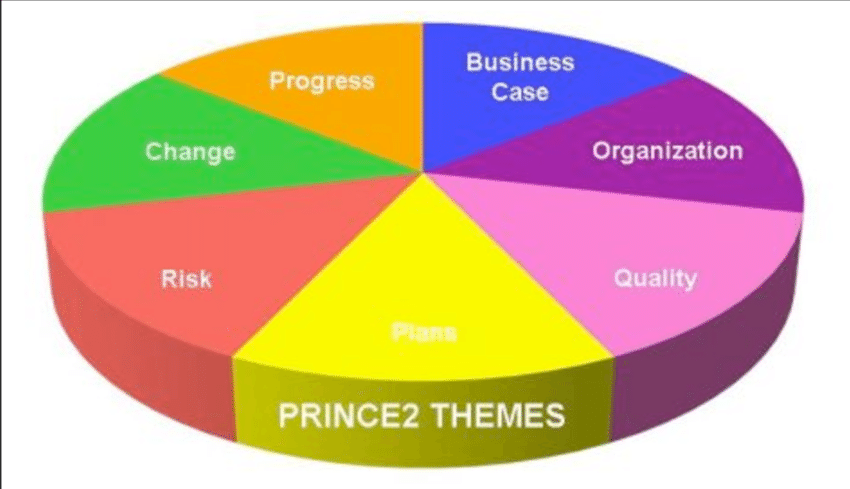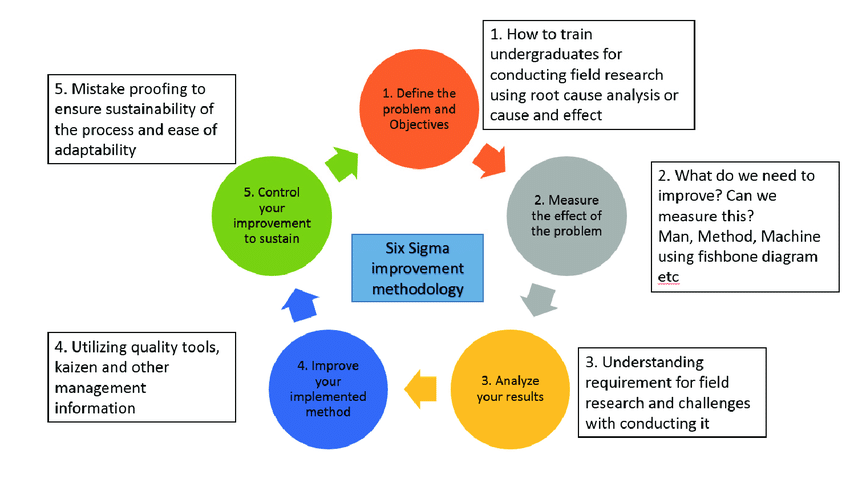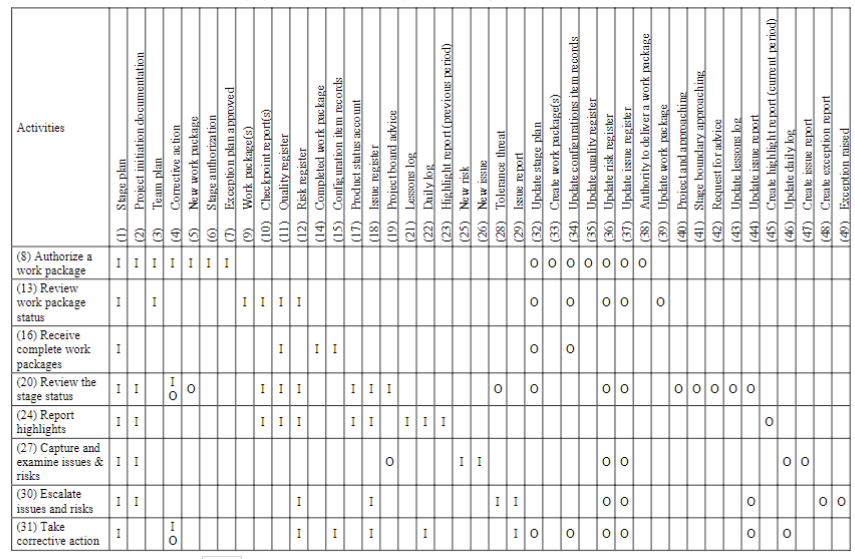Executive Summary
Project management is crucial to any company since it ensures a smooth workflow and the efficiency of processes. The variety of methodologies suggests the need for analysis and comparison of tools commonly used by project managers. This paper provides an overview and a comparison of PRINCE2® and Six Sigma methods. The critical advantages and disadvantages are discussed, and recommendations are made based on the findings of this report. A conclusion can be made that PRINCE2® is a tool suitable for running the project, and Six Sigma is a technique aimed at problem-solving. Therefore, these methodologies are compatible and can both be utilized in the project management process.
The efficiency of the project management process depends on various factors, such as defining a plan, minimizing risks and deviations from the strategy, and effectively controlling change. Numerous project management methodologies are known, which identify the need to compare tools and assess their efficiency in terms of assuring the quality of the process (Jugdev et al., 2013; Edmonds, 2010). This report aims to provide a comparative analysis of PRINCE2® and Six Sigma, as well as share a reflection on personal experience with using the online PRINCE2® e-learning course.
A Comparative Analysis of PRINCE2® and Six Sigma
PRINCE2® Methodology
PRINCE2® (PRoject IN Controlled Environments 2) is a widely recognized process-based method for project management. It aims to help the project manager control the work process in its entirety by dividing a project into manageable stages, regardless of its overall scale. The PRINCE2 standard was originally developed in the UK by the government for information technology projects but eventually became one of the most utilized methodologies in a wide range of industries (Wang, Sasanipoor and Wang, 2020). PRINCE2® comprises seven themes, principles, and processes that constitute a flexible and easily-repeatable guide for successful project delivery (as presented in Figure 1). Hence, the tool implements all crucial aspects of project management.

The three key elements that support the methodology, such as a PRINCE2 Handbook, Foundation Certification, and an online membership service. As research findings by Wang, Sasanipoor and Wang (2020, p. 1419) suggest, “firms can make business processes more amenable to outsourcing and facilitate monitoring of vendor performance and effective coordination with vendors” with PRINCE2®. Furthermore, Joslin and Müller (2016, p. 364) indicate a “positive relationship between project methodology elements and the characteristics of project success,” which implies the importance of a practical approach to project management. The control processes in PRINCE2 include numerous activities that have inputs and outputs (as shown in the Appendix). Overall, PRINCE2® is a process-driven tool focusing on understanding the entire project.
Six Sigma Methodology
Six Sigma is another methodology applied in corporate management for improving production and eliminating defects. It is a strategic approach to business improvement that aims to find and remove the causes of errors in business processes by focusing on the initial parameters critical to the consumer (Tenera and Pinto, 2014). The development of the Six Sigma methodology was widely influenced by previous concepts of quality improvement, such as quality control methodologies, total quality management (TQM), and zero defects programs. This tool is applicable to a wide range of business processes, including project management.
Six Sigma methodology relies on a five-step cycle for improving the existing procedures and achieving the objectives quickly and precisely, such as defining, measuring, analyzing, improving, and controlling (Tenera and Pinto, 2014, p. 912). A detailed description of the five stages is depicted in Figure 2. As research findings by Tenera and Pinto (2014) suggest, Six Sigma allows for product and service improvement, cost decrease, and the company profitability growth. Six Sigma is a data-driven methodology that helps the project manager identify and eliminate the cause behind the project failure.

The Advantages and Disadvantages of PRINCE2®
The major advantage of the PRINCE2® methodology is its applicability in highly technology-driven management companies. It allows for implementing a consistent approach that helps the project manager organize and control all the project stages based on rational decisions. According to Matos and Lopes (2013, p. 789), the PRINCE2 method “provides the necessary controls and breakpoints to work successfully within a contractual framework,” which indicates the effectiveness of the tool. Overall, one can list the following benefits that the PRINCE2® methodology suggests:
- a holistic approach to project management;
- consideration of the project’s lifecycle for a better organization of the process;
- tracking of the project’s progression and performance indicators;
- wide recognition of PRINCE2® standard across various industries;
- the flexibility and genericness of the methodology;
- crisis management principles used for uncertainty;
- the adaptability and fundamentalism of the approach.
On the other hand, PRINCE2® requires the project manager to familiarize themselves with excessive documentation. Furthermore, it relies on the involvement of senior management, which can slow down the operational processes (Perrier, Benbrahim and Pellerin, 2018). Other drawbacks of this methodology include the following:
- the need to maintain and update a significant amount of documentation;
- no consideration of soft skills;
- experience needed for successful implementation.
The Advantages and Disadvantages of Six Sigma
Six Sigma’s key advantage is its focus on a better understanding of customer needs and eliminating waste and defects. The six Sigma approach allows for a clear definition of the project’s goals and objectives. The framework is based on the idea of a repeatable process whose purpose is to create efficient outcomes for the project. Furthermore, the benefits of utilizing Six Sigma are as follows:
- the involvement of teamwork;
- improved decision-making process;
- the method’s dependence on reliable real-time data;
- quality and delivery improvement;
- reduction of waste and cost;
- continuous improvement principle;
- the enhancement of a project’s competitive position.
At the same time, such an iterative process implies the possibility of additional time required for coming to a conclusion. Moreover, the following drawbacks of Six Sigma can be identified:
- complicated procedures and extensive empirical data;
- possibly increased overall costs due to the method’s quality improvement orientation;
- rigidity and creativity constraining.
Recommendations Based on the Comparative Analysis
Based on the aforementioned advantages and disadvantages of the two methodologies, I can conclude that PRINCE2® is a mechanism suitable for running the project, while Six Sigma is a tool aimed at problem-solving. Hence, both methodologies are compatible and can be applied by the project manager in combination to ensure the success of the process. I would recommend that high management relies on teamwork and prevents the bureaucracy from stifling the employees’ creativity during their work on the project. Furthermore, adequate training needs to be provided to ensure an efficient application of the methodologies.
Reflective Essay
My experience with ILX Group’s PRINCE2 Foundation e-learning course was overall positive and insightful. The learning objectives include an understanding of the key concepts and principles related to PRINCE2® and project management. Moreover, the method’s themes and processes are covered along with the ways they are applied in the project, which helped me grasp the idea of the PRINCE2 technique and its strengths and weaknesses.
I found the course structure coherent and logical, which allowed for a better understanding of the subject. Recognizable characters and thought through guidance make the learning process easier and more memorable. Furthermore, interactive exercises are a valuable opportunity to prepare for the PRINCE2 Foundation examination. The questions prompted me to realize that the project manager’s reaction to different situations is not always intuitive and, thus, must be trained for more efficient decisions. In this regard, I found the course exam preparation very helpful. Documented experience and simulations allow for the development of a logical approach and responses to crises.
I believe that studying should prepare students for real-life situations and challenges and teach them to make effective decisions. ILX Group’s PRINCE2 Foundation e-learning course is developed for providing future project managers with adequate knowledge and skills required for their work. As to drawbacks, personally, I would prefer more interactive exercises that help me memorize the theory and learn how to find solutions. Furthermore, it would be reasonable to include more succinct sentences since expanded descriptions might sometimes confuse the student with their comprehensiveness. Overall, I find my experience with the PRINCE2 Foundation e-learning course productive and helpful, and the program helped me acquire the necessary knowledge regarding project management.
To summarize, PRINCE2® is a well-structured and widely utilized methodology in project management that considers a project as a whole and divides it into controllable stages to meet the objectives. As the analysis shows, the methodology can be beneficial for thorough planning and structured processes for efficient work. At the same time, Six Sigma is a different, primarily customer-oriented tool that aims at detecting and eliminating errors throughout the project. While PRINCE2® is a process-driven approach, Six Sigma relies on data. Hence, both methodologies can be combined with a project manager to control the processes and achieve the project objectives.
Reference List
Chopra, K., Chopra, S. and Laux, C. (2017) ‘Utilizing Six Sigma Methodology for training undergraduate student for conducting global field research’, Fourth International Conference on Lean Six Sigma for Higher Education. Iowa State University, pp.50-55. Web.
Cotrim, J. M. O. (2015) Managing Projects with PRINCE2. Web.
Edmonds, J. (2010) ‘How training in project management can help businesses to get back on track, Industrial and Commercial Training, 42(6), pp. 314-318. Web.
Joslin, R. and Müller, R. (2016) ‘The impact of project methodologies on project success in different project environments, International Journal of Managing Projects in Business, 9(2), pp. 364-388. Web.
Jugdev, K. et al. (2013) ‘An exploratory study of project success with tools, software and methods, International Journal of Managing Projects in Business, 6(3), pp. 534-551. Web.
Matos, S. and Lopes, E. (2013) ‘Prince2 or PMBOK–a question of choice’, Procedia Technology, 9, pp. 787-794. Web.
Perrier, N., Benbrahim, S. E. and Pellerin, R. (2018) ‘The core processes of project control: A network analysis’, Procedia computer science, 138, pp. 697-704. Web.
Tenera, A. and Pinto, L. C. (2014) ‘A Lean Six Sigma (LSS) project management improvement model’, Procedia-Social and Behavioral Sciences, 119, pp. 912-920. Web.
Wang, J.J., Sasanipoor, N. and Wang, M.M. (2020) ‘The influence of PRINCE2 standard on customer satisfaction in information technology outsourcing: an investigation of a mediated moderation model’, Journal of Enterprise Information Management, 33(6), pp. 1419-1442. Web.
Appendix

